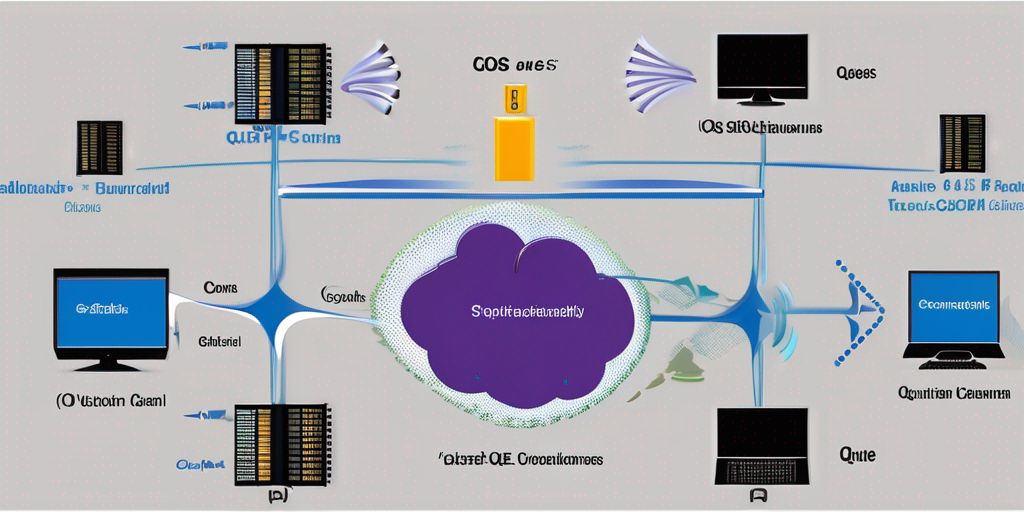The Importance of QoS and QoE in Telecoms

Defining QoS and QoE
In the realm of telecommunications, Quality of Service (QoS) and Quality of Experience (QoE) play a pivotal role in ensuring customer satisfaction and optimizing network performance. QoS refers to the measurable parameters that determine the level of service provided by a network, such as bandwidth, latency, and packet loss. On the other hand, QoE encompasses the subjective perception of users regarding the quality of their communication or multimedia experience. While QoS focuses on technical aspects, QoE takes into account the human factor, considering factors like audio and video quality, responsiveness, and overall user satisfaction.
The Relationship Between QoS and QoE
The relationship between Quality of Service (QoS) and Quality of Experience (QoE) is crucial in the telecom industry. QoS refers to the technical parameters that determine the performance of a network, such as bandwidth, latency, and packet loss. On the other hand, QoE focuses on the end user’s perception of the service quality, including factors like audio and video quality, responsiveness, and overall satisfaction. IoT devices, which are becoming increasingly prevalent in telecom networks, can have a significant impact on both QoS and QoE.
The Impact of QoS and QoE on Telecom Services
The impact of Quality of Service (QoS) and Quality of Experience (QoE) on telecom services is significant. QoS refers to the performance and reliability of the network infrastructure, while QoE focuses on the end user’s perception of the service quality. Both QoS and QoE play a crucial role in ensuring customer satisfaction and loyalty.
QoS directly affects the technical aspects of telecom services, such as network latency, packet loss, and bandwidth availability. These factors determine the overall performance and reliability of the network. A high QoS ensures smooth and uninterrupted communication, while a poor QoS can lead to dropped calls, slow internet speeds, and other service disruptions.
On the other hand, QoE is subjective and depends on the user’s perception of the service. It takes into account factors like call clarity, video streaming quality, and overall user experience. A positive QoE enhances customer satisfaction and encourages repeat usage, while a negative QoE can result in customer dissatisfaction and churn.
In summary, QoS and QoE are essential for delivering high-quality telecom services. By prioritizing QoS and continuously improving QoE, telecom operators can provide a seamless and satisfying user experience, leading to customer retention and business growth.
Measuring QoS and QoE in Telecoms

Key Metrics for Assessing QoS
When evaluating the quality of service (QoS) in telecoms, there are several key metrics that we consider. These metrics provide us with valuable insights into the performance and reliability of telecom services. One important metric is the maximum average revenue per user (ARPU), which measures the average revenue generated by each user. By monitoring and optimizing ARPU, telecom operators can maximize their revenue and ensure the profitability of their services.
Methods for Evaluating QoE
When evaluating the Quality of Experience (QoE) in telecoms, there are several methods that can be employed. These methods allow us to gain insights into the user’s perception of the service and identify areas for improvement. One such method is Network Optimization, which focuses on enhancing the performance and efficiency of the network infrastructure.
Network Optimization involves analyzing the network’s configuration, traffic patterns, and resource allocation to ensure optimal delivery of services. By optimizing the network, telecom providers can minimize latency, reduce packet loss, and improve overall network performance.
Another approach to evaluating QoE is through user surveys and feedback. By collecting feedback from users, telecom providers can understand their satisfaction levels, identify pain points, and prioritize areas for improvement. Surveys can be conducted through various channels, such as online questionnaires or in-app feedback forms.
In addition to surveys, objective metrics can also be used to evaluate QoE. These metrics include factors like call quality, video streaming performance, and web page loading time. By measuring these metrics, telecom providers can quantitatively assess the user’s experience and identify areas that require attention and optimization.
It is important to note that evaluating QoE is an ongoing process. As technology evolves and user expectations change, telecom providers must continuously monitor and evaluate the quality of their services to ensure customer satisfaction and loyalty.
Challenges in Measuring QoS and QoE
Measuring QoS and QoE in the telecoms industry presents several challenges. One of the main challenges is ensuring accurate and reliable measurement of these metrics. Telecoms service providers need to implement sophisticated monitoring systems and tools to capture and analyze the vast amount of data generated by their networks. This data includes network performance indicators, user experience feedback, and other relevant parameters.
Another challenge is the subjective nature of QoE measurement. While QoS can be quantitatively measured using specific metrics, such as latency, packet loss, and throughput, QoE relies heavily on user perception and satisfaction. Telecoms providers must find ways to capture and interpret user feedback effectively to gain insights into the quality of their services.
Additionally, the diversity of telecom services and technologies further complicates the measurement process. Different services, such as voice calls, video streaming, and data transfers, have unique requirements and performance expectations. Telecoms providers need to consider these variations and develop tailored measurement methodologies for each service type.



